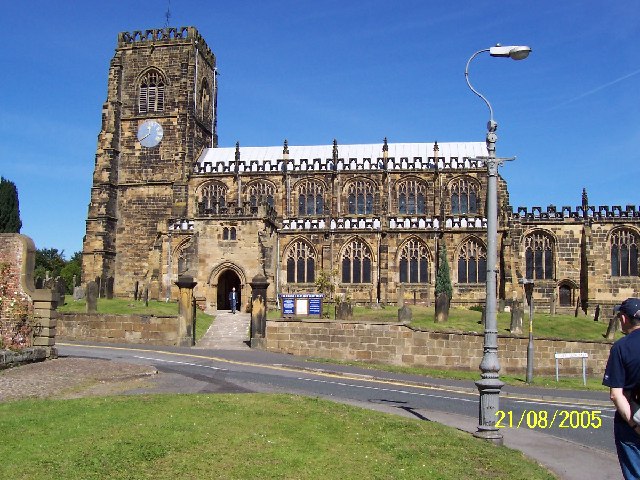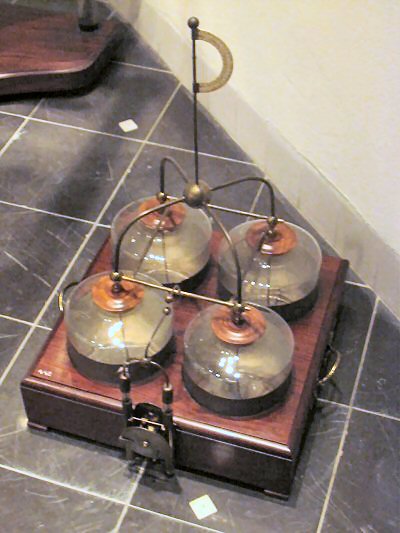|
R. E. B. Crompton
Rookes Evelyn Bell Crompton, CB, FRS (31 May 1845 – 15 February 1940) was a British electrical engineer, industrialist and inventor. He was a pioneer of electric lighting and public electricity supply systems. The company he formed, Crompton & Co., was one of the world's first large-scale manufacturers of electrical equipment. He was also an early campaigner for an international standard for electrical systems. He was involved with both the practical and academic sides of his discipline, being a founder member of the International Electrotechnical Commission and twice president of the Institution of Electrical Engineers. He was a fellow of the Royal Society and a founder member of the Royal Automobile Club. Early life Evelyn Crompton was born at Sion Hill, near Thirsk, Yorkshire, one of five children. From an early age he was interested in machines and engineering. His autobiography tells how a trip to the Great Exhibition aged 6 had a profound impact on him: His school ... [...More Info...] [...Related Items...] OR: [Wikipedia] [Google] [Baidu] |
Thirsk
Thirsk is a market town and civil parish in the Hambleton district of North Yorkshire, England known for its racecourse; quirky yarnbomber displays, and depiction as local author James Herriot's fictional Darrowby. History Archeological finds indicate there was a settlement in Thirsk around 500–600 BC. The town's name is derived from the Old Norse word ''þresk'' meaning fen or lake. Thirsk is mentioned twice in the 1086 ''Domesday Book'' as ''Tresche'', in the ''Yarlestre'' wapentake, a village with ten households. At the time of the Norman invasion the manor was split between ''Orm'' and ''Thor'', local Anglo-Saxon landowners. Afterwards, it was split between ''Hugh, son of Baldric'' and the Crown. House of Mowbray Most of Thirsk was granted to a Robert from Montbray for whose descendant House of Mowbray the vale of Mowbray is named. By 1145, what is now Old Thirsk, gained a Market charter giving it town and borough status. The remaining land in the parish was sti ... [...More Info...] [...Related Items...] OR: [Wikipedia] [Google] [Baidu] |
Royal Society
The Royal Society, formally The Royal Society of London for Improving Natural Knowledge, is a learned society and the United Kingdom's national academy of sciences. The society fulfils a number of roles: promoting science and its benefits, recognising excellence in science, supporting outstanding science, providing scientific advice for policy, education and public engagement and fostering international and global co-operation. Founded on 28 November 1660, it was granted a royal charter by King Charles II as The Royal Society and is the oldest continuously existing scientific academy in the world. The society is governed by its Council, which is chaired by the Society's President, according to a set of statutes and standing orders. The members of Council and the President are elected from and by its Fellows, the basic members of the society, who are themselves elected by existing Fellows. , there are about 1,700 fellows, allowed to use the postnominal title FRS (Fellow of the ... [...More Info...] [...Related Items...] OR: [Wikipedia] [Google] [Baidu] |
Great Northern Railway (Great Britain)
The Great Northern Railway (GNR) was a British railway company incorporated in 1846 with the object of building a line from London to York. It quickly saw that seizing control of territory was key to development, and it acquired, or took leases of, many local railways, whether actually built or not. In so doing, it overextended itself financially. Nevertheless, it succeeded in reaching into the coalfields of Nottinghamshire, Derbyshire and Yorkshire, as well as establishing dominance in Lincolnshire and north London. Bringing coal south to London was dominant, but general agricultural business, and short- and long-distance passenger traffic, were important activities too. Its fast passenger express trains captured the public imagination, and its Chief Mechanical Engineer Nigel Gresley became a celebrity. Anglo-Scottish travel on the East Coast Main Line became commercially important; the GNR controlled the line from London to Doncaster and allied itself with the North Ea ... [...More Info...] [...Related Items...] OR: [Wikipedia] [Google] [Baidu] |
Doncaster Works
Doncaster Railway Works is a railway workshop located in Doncaster, England. Also referred to as The Plant''", it was established by the Great Northern Railway in 1853, replacing the previous works in Boston and Peterborough. Until 1867 it undertook only repairs and maintenance. Today the remaining part is operated by Wabtec. History In 1866, Patrick Stirling was appointed as Locomotive Superintendent, and the first of the 875 class was built in 1886. At this time the works also began building new coaches: in 1873 the first sleeping cars; in 1879 the first dining cars in the United Kingdom; and in 1882 the first corridor coaches. In 1891, 99 locomotives, 181 carriages and 1,493 wagons were built. Among the locomotives the works produced were the Stirling Singles, the Ivatt Atlantics and the Gresley Pacifics, including the world-famous '' Flying Scotsman'', the first locomotive to achieve 100 mph and also run from London King's Cross to Edinburgh Waverley non-stop; ... [...More Info...] [...Related Items...] OR: [Wikipedia] [Google] [Baidu] |
Steam Tractor
:''This article refers to the steam-powered agricultural tractor; for other types of steam tractor, see: Traction engine'' A steam tractor is a vehicle powered by a steam engine which is used for pulling. In North America, the term ''steam tractor'' usually refers to a type of agricultural tractor powered by a steam engine, used extensively in the late 19th and early 20th centuries. In Great Britain, the term ''steam tractor'' is more usually applied to the smallest models of traction engine - typically those weighing seven tons or less - used for hauling small loads on public roads. Although known as ''light steam tractors'', these engines are generally just smaller versions of the ' road locomotive'. This article concentrates on the steam-powered agricultural vehicles intended for the direct-pulling of ploughs and other implements (as opposed to cable-hauling). Development (Great Britain) Owing to differences in soil conditions, the development of steam-powered agricult ... [...More Info...] [...Related Items...] OR: [Wikipedia] [Google] [Baidu] |
Leyden Jars
A Leyden jar (or Leiden jar, or archaically, sometimes Kleistian jar) is an electrical component that stores a high-voltage electric charge (from an external source) between electrical conductors on the inside and outside of a glass jar. It typically consists of a glass jar with metal foil cemented to the inside and the outside surfaces, and a metal terminal projecting vertically through the jar lid to make contact with the inner foil. It was the original form of capacitor (also called a ''condenser''). Its invention was a discovery made independently by German cleric Ewald Georg von Kleist on 11 October 1745 and by Dutch scientist Pieter van Musschenbroek of Leiden (Leyden), Netherlands in 1745–1746. The Leyden jar was used to conduct many early experiments in electricity, and its discovery was of fundamental importance in the study of electrostatics. It was the first means of accumulating and preserving electric charge in large quantities that could be discharged at the exp ... [...More Info...] [...Related Items...] OR: [Wikipedia] [Google] [Baidu] |
Static Electricity
Static electricity is an imbalance of electric charges within or on the surface of a material or between materials. The charge remains until it is able to move away by means of an electric current or electrical discharge. Static electricity is named in contrast with current electricity, where the electric charge flows through an electrical conductor or space, and transmits energy. A static electric charge can be created whenever two surfaces contact and have worn and separated, and at least one of the surfaces has a high resistance to electric current (and is therefore an electrical insulator). The effects of static electricity are familiar to most people because people can feel, hear, and even see the spark as the excess charge is neutralized when brought close to a large electrical conductor (for example, a path to ground), or a region with an excess charge of the opposite polarity (positive or negative). The familiar phenomenon of a static shockmore specifically, an electros ... [...More Info...] [...Related Items...] OR: [Wikipedia] [Google] [Baidu] |
Mathematics
Mathematics is an area of knowledge that includes the topics of numbers, formulas and related structures, shapes and the spaces in which they are contained, and quantities and their changes. These topics are represented in modern mathematics with the major subdisciplines of number theory, algebra, geometry, and analysis, respectively. There is no general consensus among mathematicians about a common definition for their academic discipline. Most mathematical activity involves the discovery of properties of abstract objects and the use of pure reason to prove them. These objects consist of either abstractions from nature orin modern mathematicsentities that are stipulated to have certain properties, called axioms. A ''proof'' consists of a succession of applications of deductive rules to already established results. These results include previously proved theorems, axioms, andin case of abstraction from naturesome basic properties that are considered true starting points of ... [...More Info...] [...Related Items...] OR: [Wikipedia] [Google] [Baidu] |
British Crimean War Medal
The Crimea Medal was a campaign medal approved on 15 December 1854, for issue to officers and men of British units (land and naval) which fought in the Crimean War of 1854–56 against Russia. The medal was awarded with the British version of the Turkish Crimea Medal, but when a consignment of these was lost at sea, some troops received the Sardinian version. Design The medal consists of a silver disc with, on the obverse, the diademed head of Queen Victoria and the legend VICTORIA REGINA with the date 1854 below. The reverse has a depiction of a standing Roman warrior about to receive a laurel crown from a flying figure of victory, the word CRIMEA appearing on the left.The medal is notable for its unusually ornate clasps. Each is in the form of an oak leaf with an acorn at each end, a style not used on any other British medal. The ornate, floriated, swivelling suspender is also unique to the Crimea Medal.Christodoulou , Glenn, ''Medals of the Crimean War'' - Crimean War Resear ... [...More Info...] [...Related Items...] OR: [Wikipedia] [Google] [Baidu] |
Crimean War
The Crimean War, , was fought from October 1853 to February 1856 between Russia and an ultimately victorious alliance of the Ottoman Empire, France, the United Kingdom and Piedmont-Sardinia. Geopolitical causes of the war included the decline of the Ottoman Empire, the expansion of the Russian Empire in the preceding Russo-Turkish Wars, and the British and French preference to preserve the Ottoman Empire to maintain the balance of power in the Concert of Europe. The flashpoint was a disagreement over the rights of Christian minorities in Palestine, then part of the Ottoman Empire, with the French promoting the rights of Roman Catholics, and Russia promoting those of the Eastern Orthodox Church. The churches worked out their differences with the Ottomans and came to an agreement, but both the French Emperor Napoleon III and the Russian Tsar Nicholas I refused to back down. Nicholas issued an ultimatum that demanded the Orthodox subjects of the Ottoman Empire be placed ... [...More Info...] [...Related Items...] OR: [Wikipedia] [Google] [Baidu] |
Harrow School
(The Faithful Dispensation of the Gifts of God) , established = (Royal Charter) , closed = , type = Public schoolIndependent schoolBoarding school , religion = Church of England , president = , head_label = Head Master , head = Alastair Land , r_head_label = , r_head = , chair_label = Chairman of the Governors , chair = J P Batting , founder = John Lyon of Preston , specialist = , address = 5 High Street, Harrow on the Hill , city = London Borough of Harrow , county = London , country = England , postcode = HA1 3HP , local_authority = , urn = 102245 , ofsted = , staff = ~200 (full-time) , e ... [...More Info...] [...Related Items...] OR: [Wikipedia] [Google] [Baidu] |
.jpg)



.jpg)

